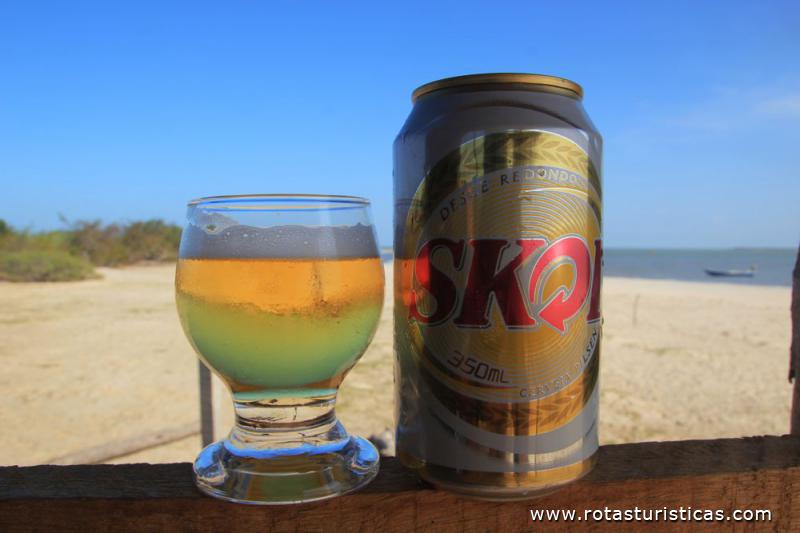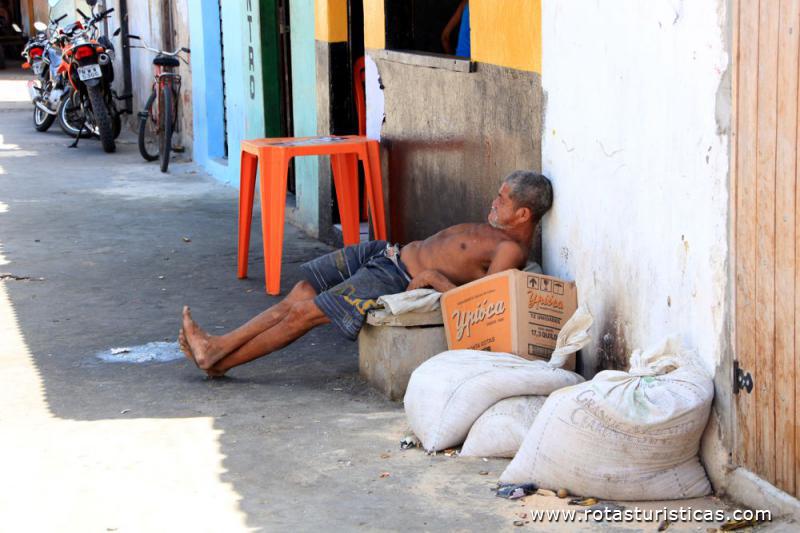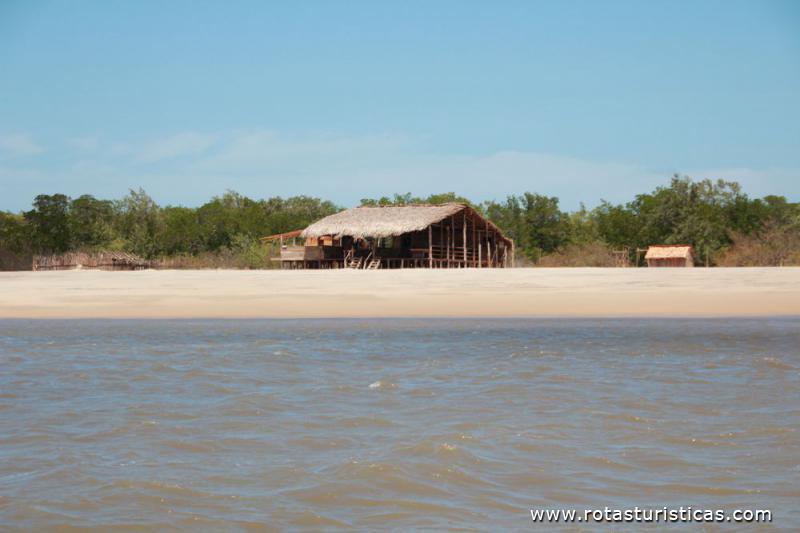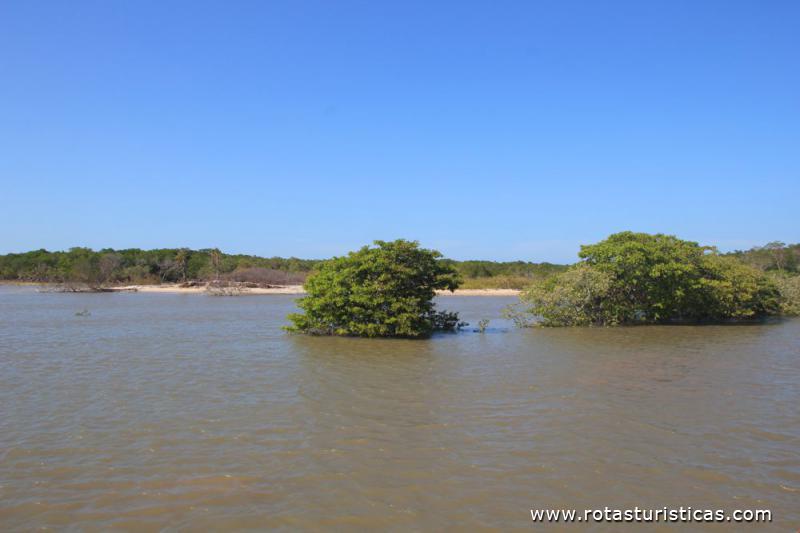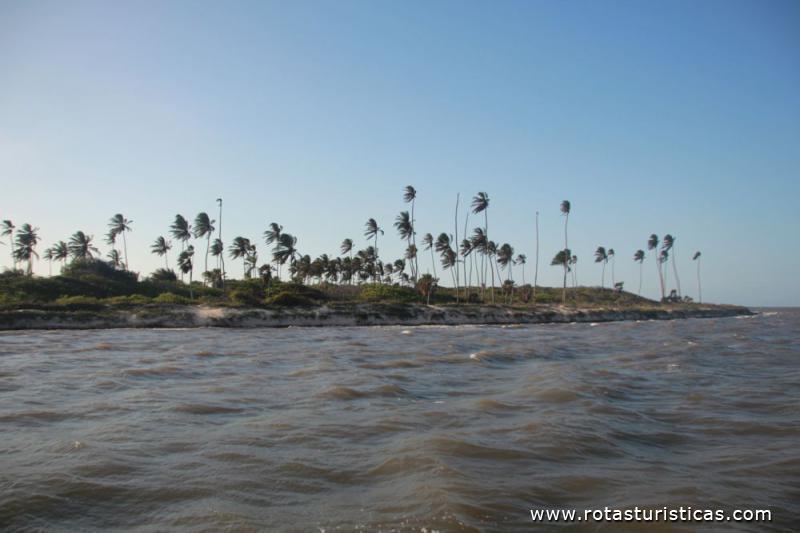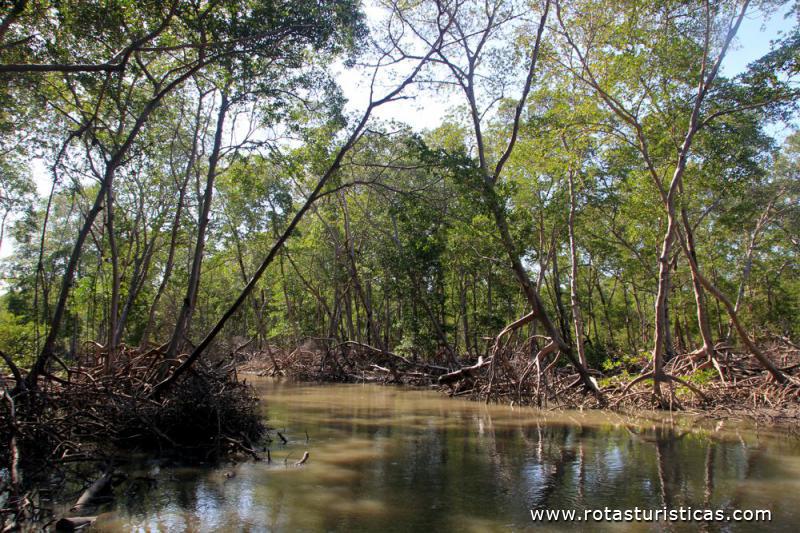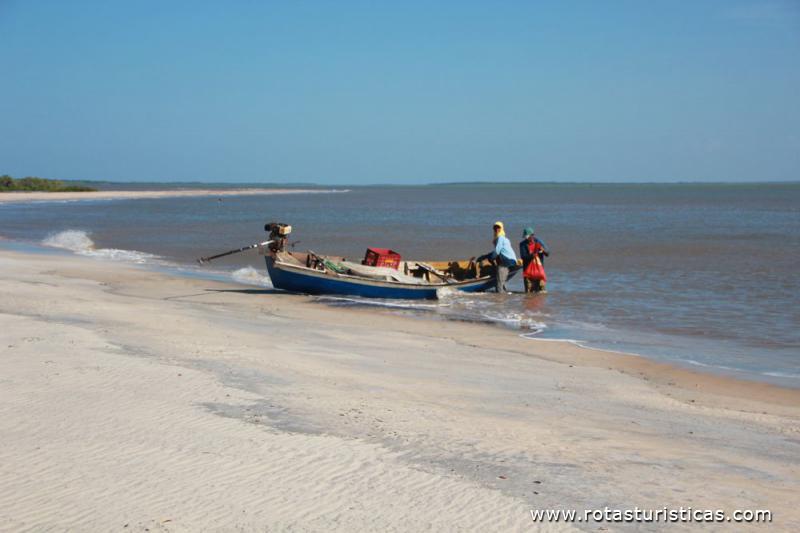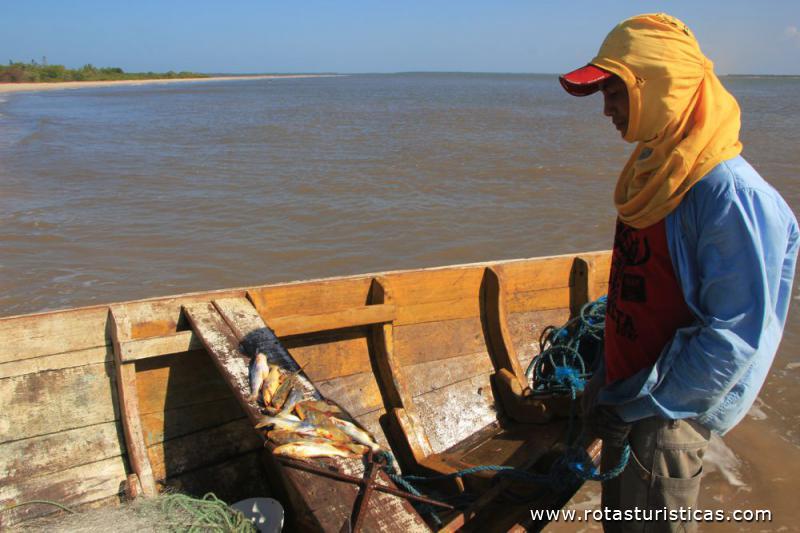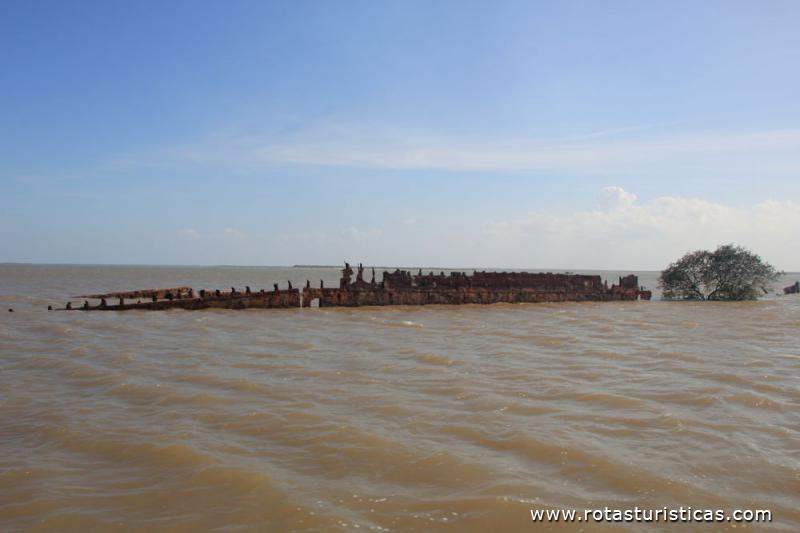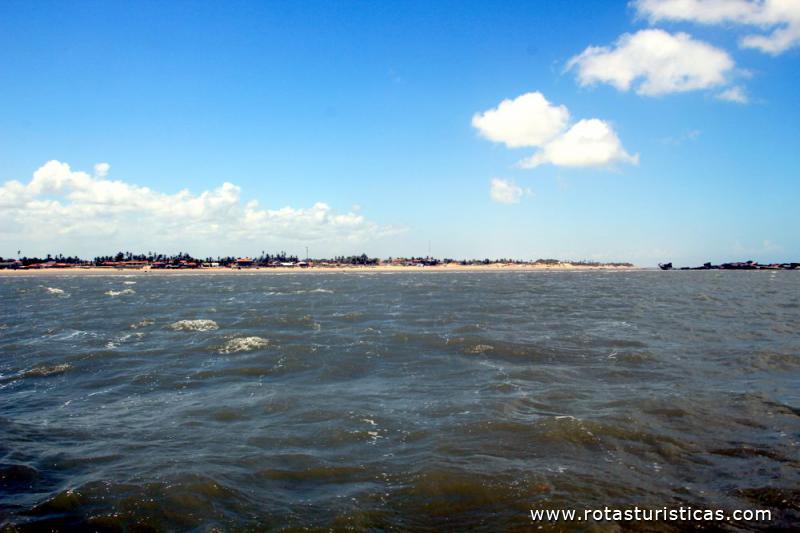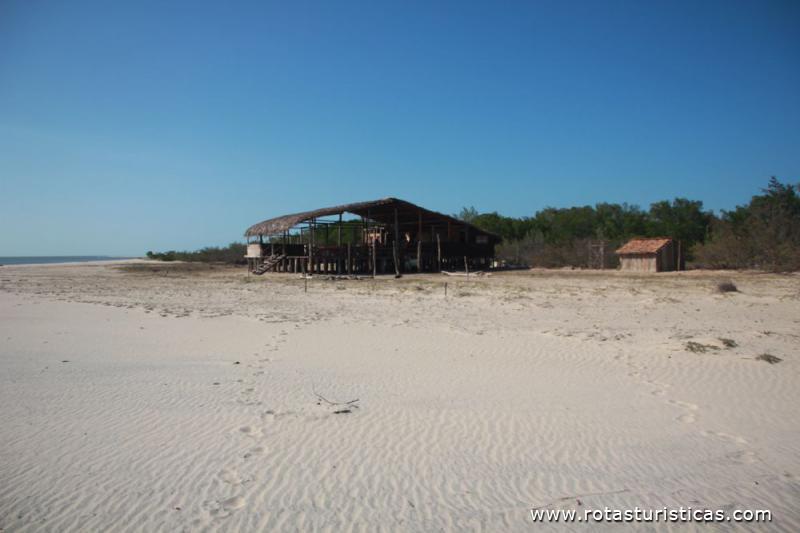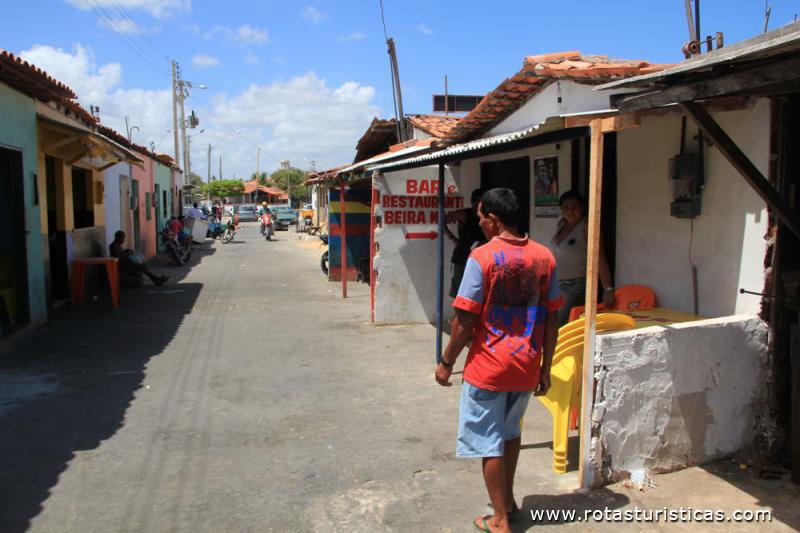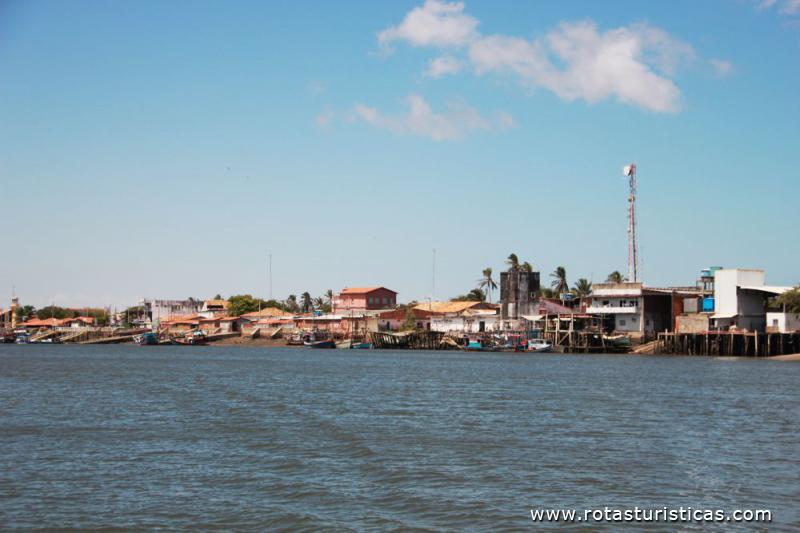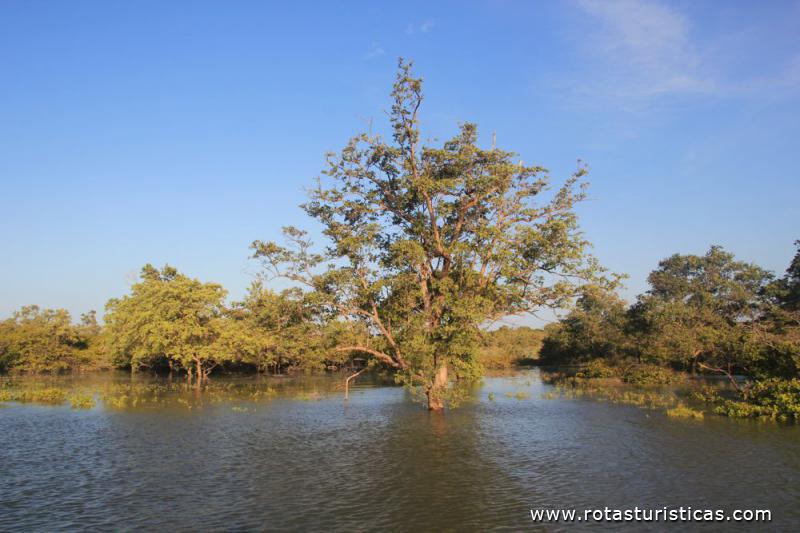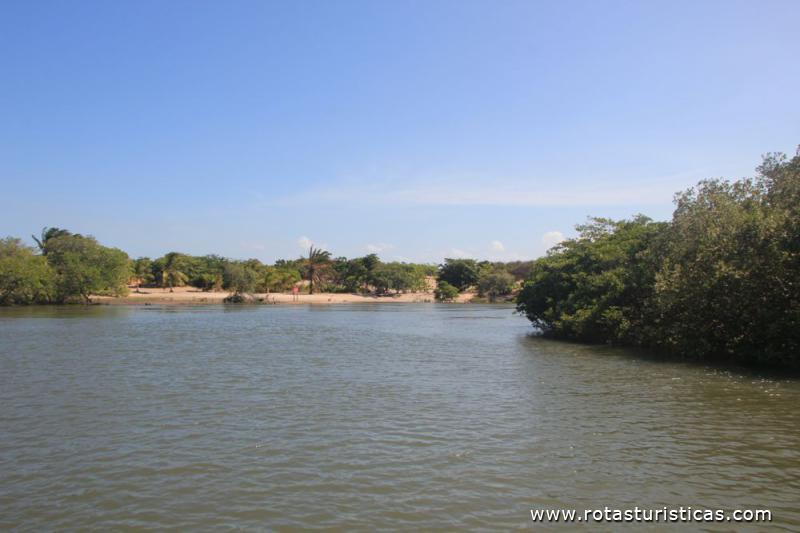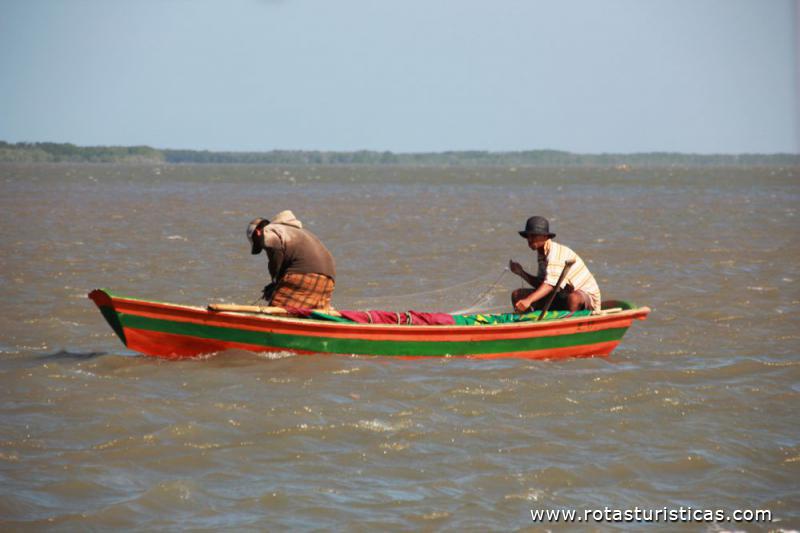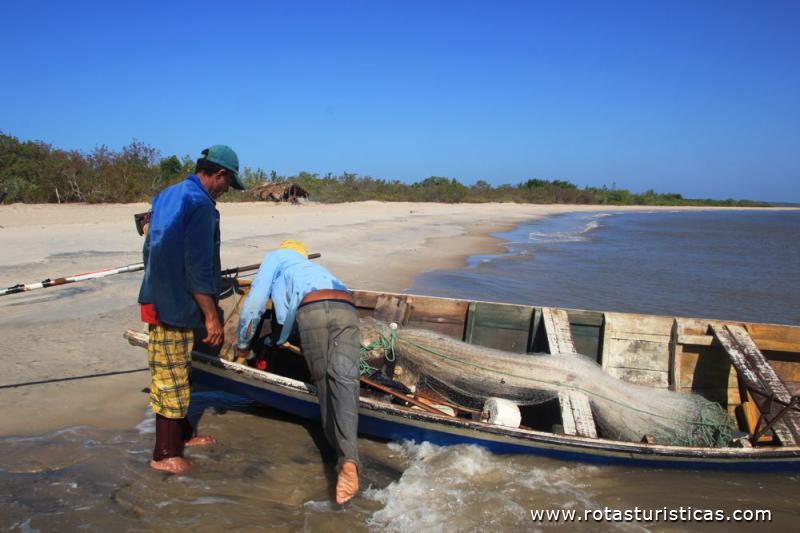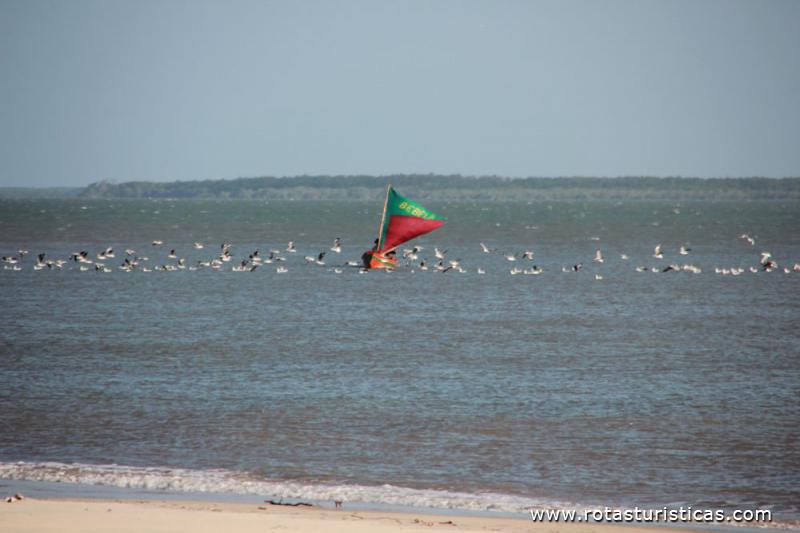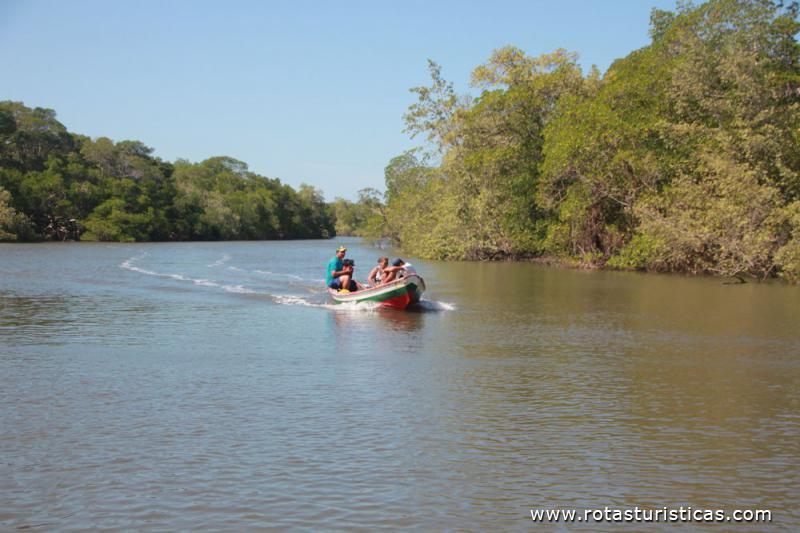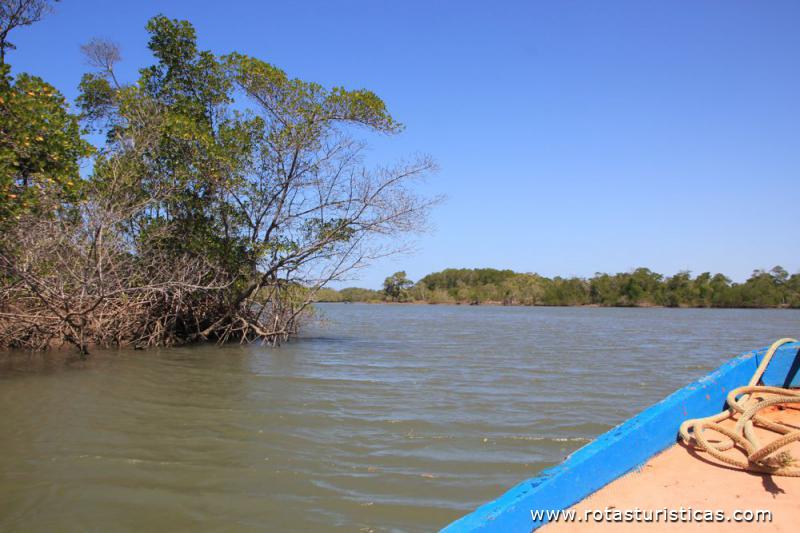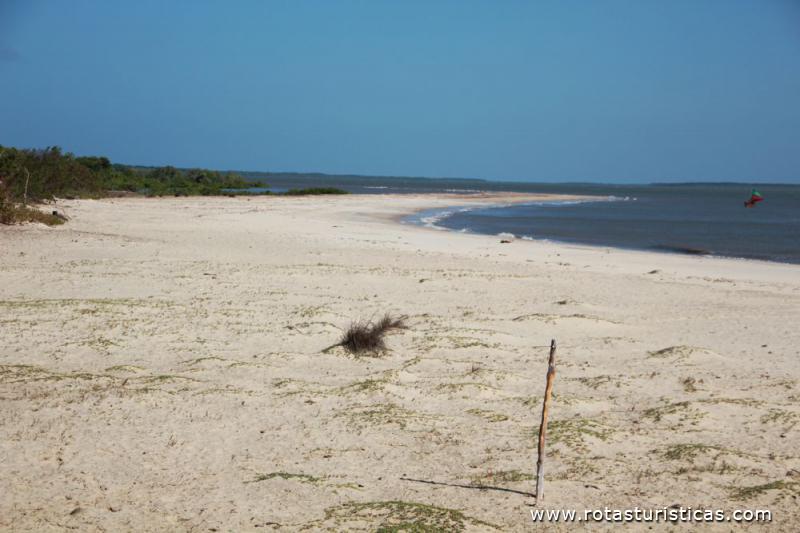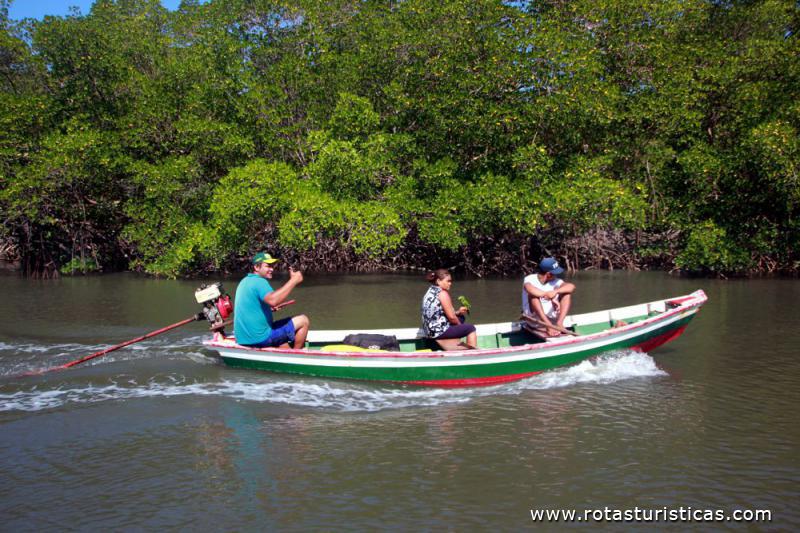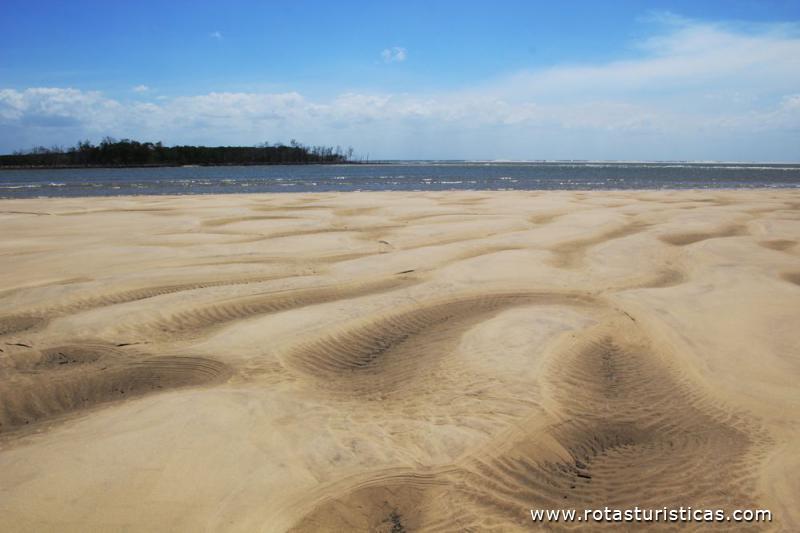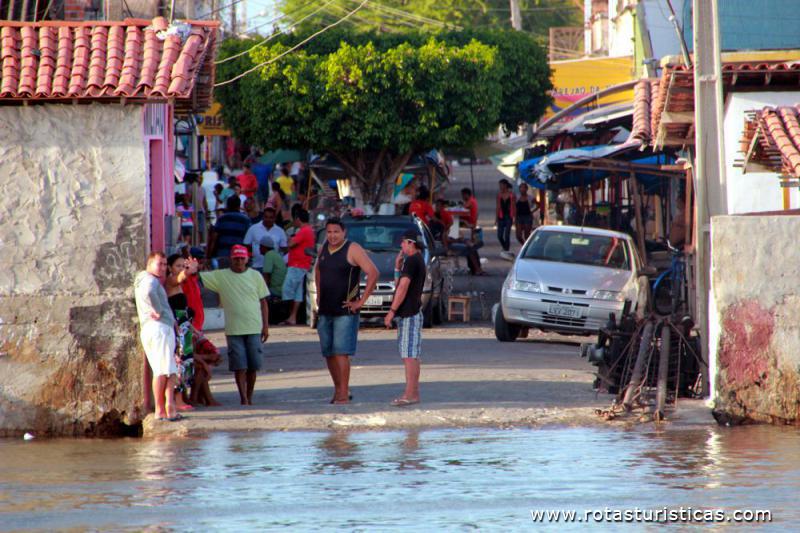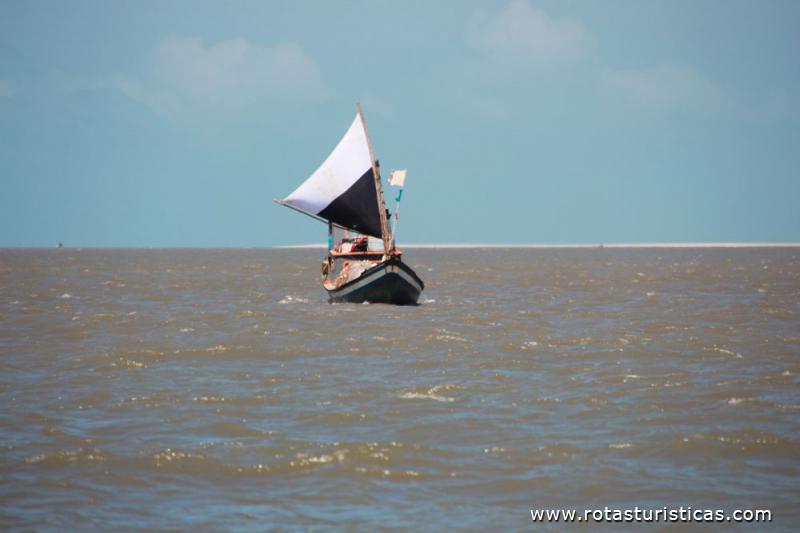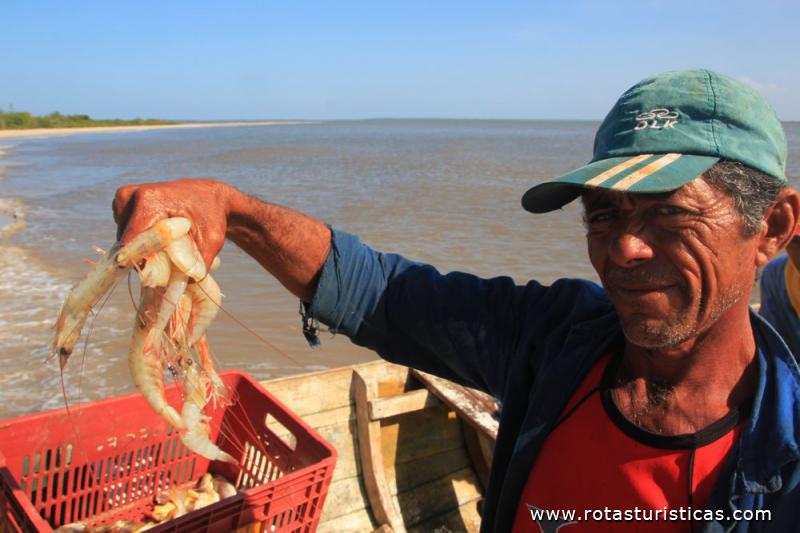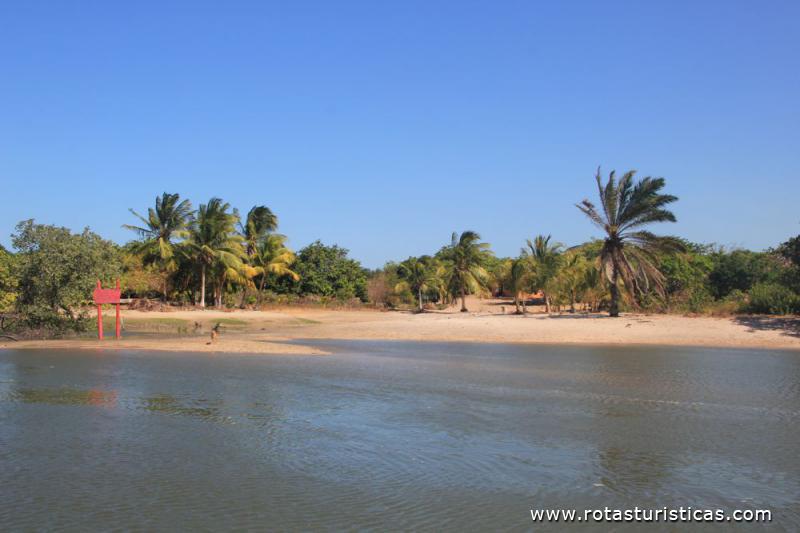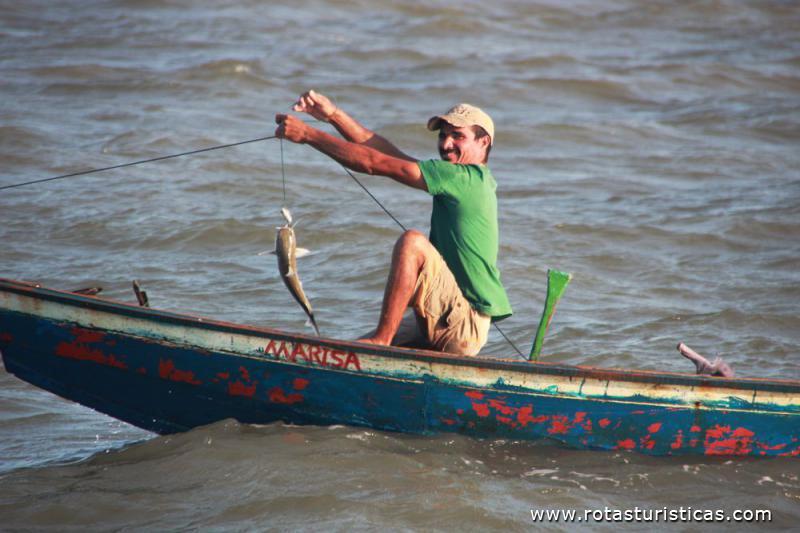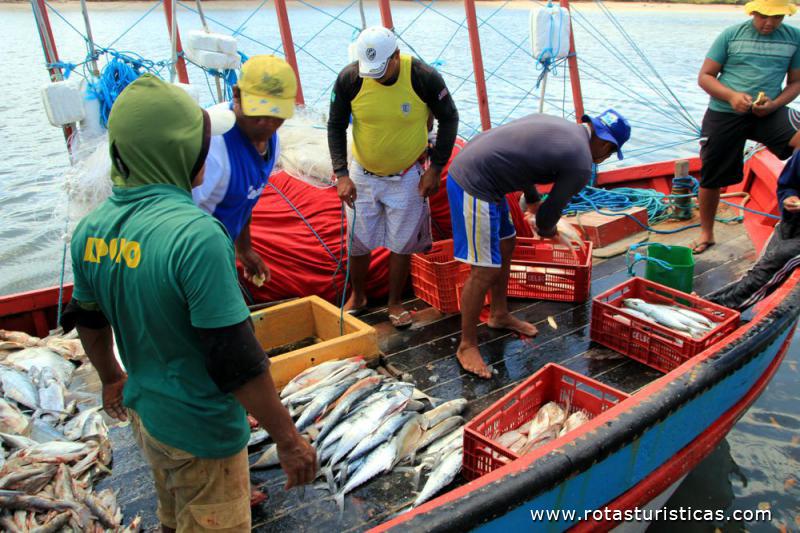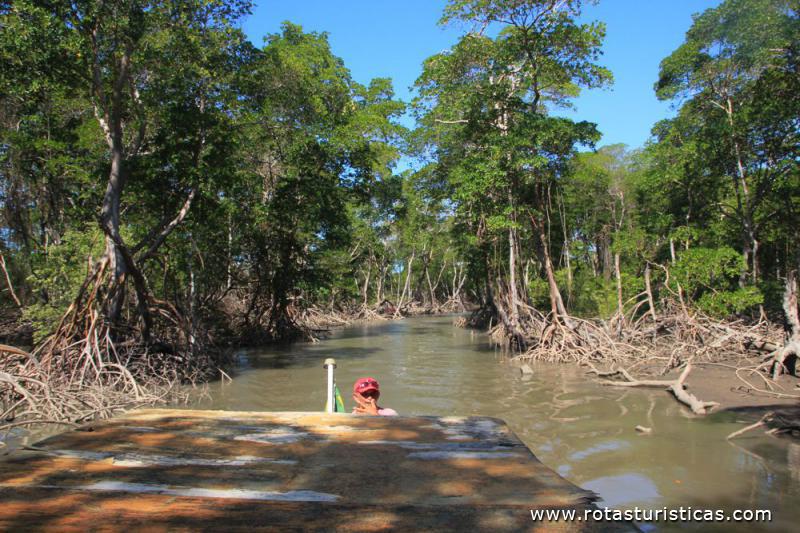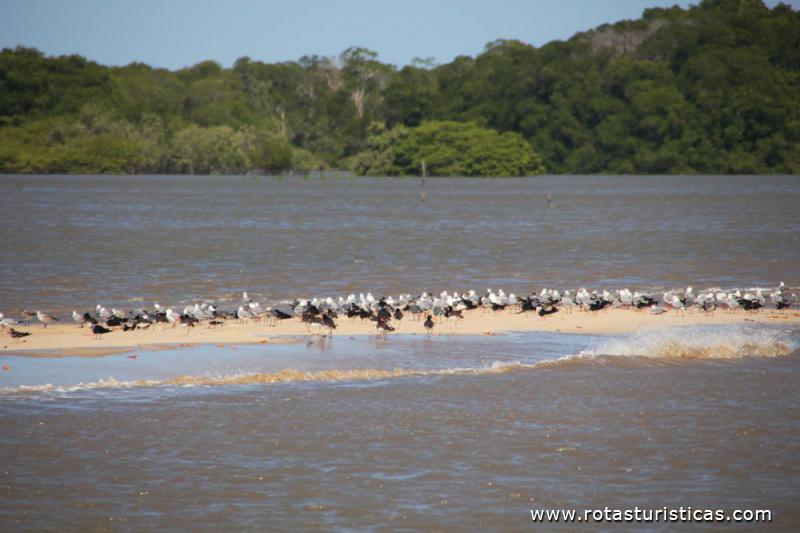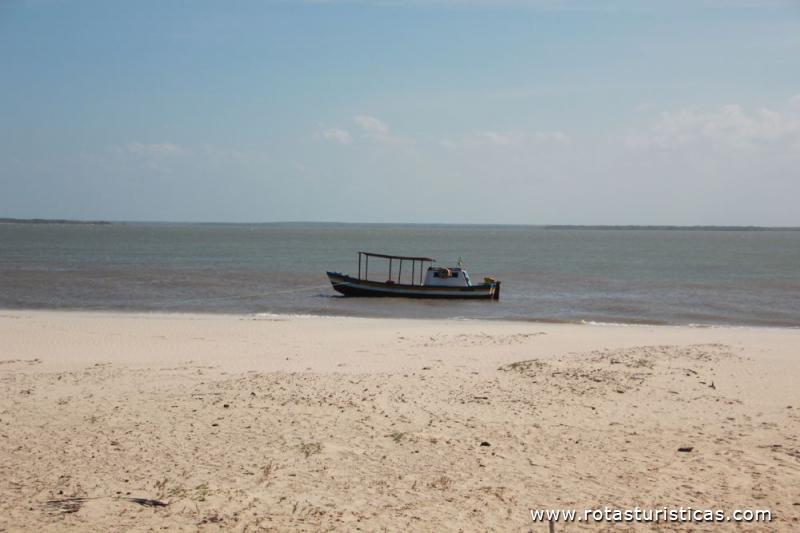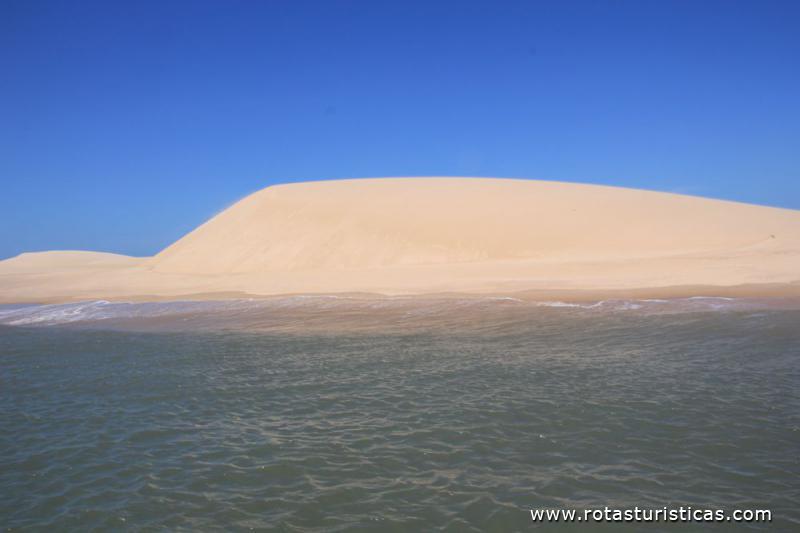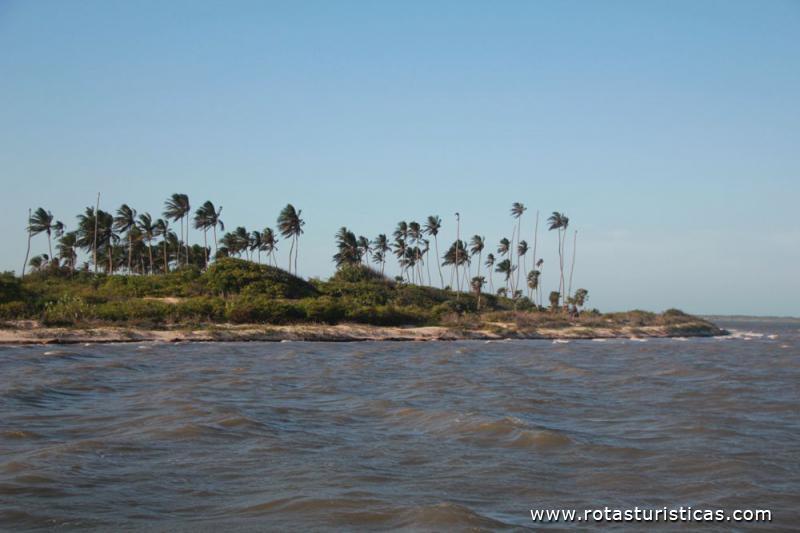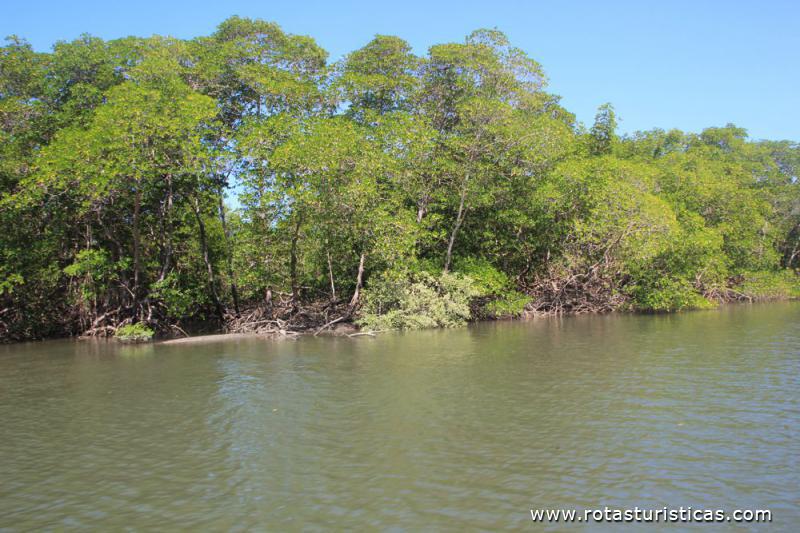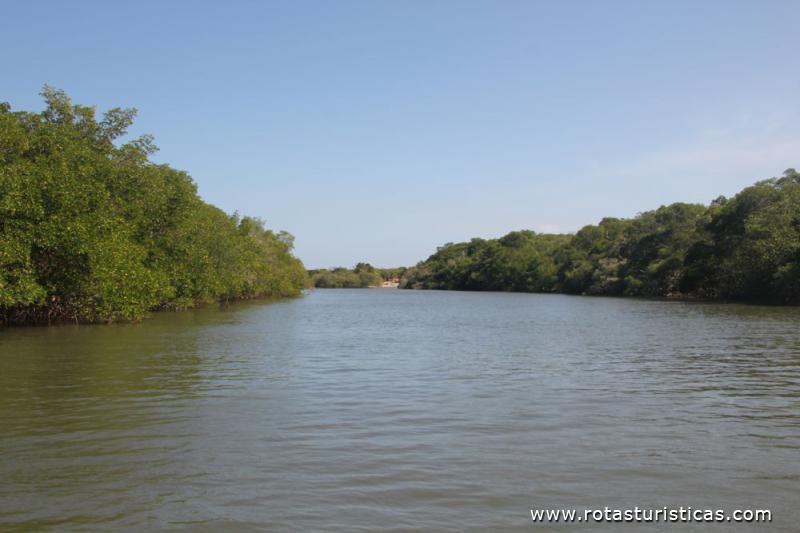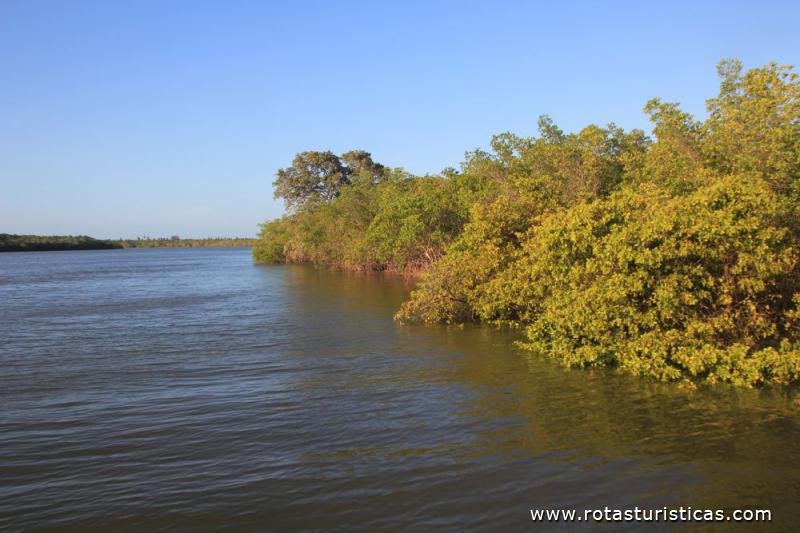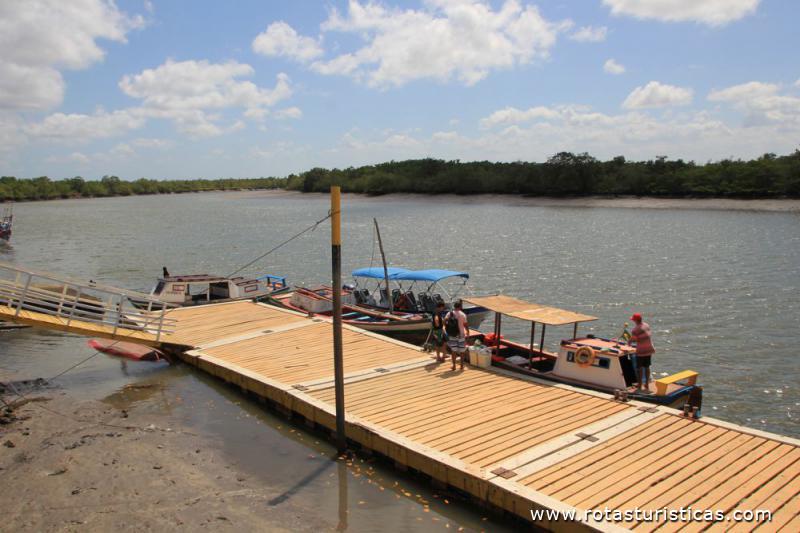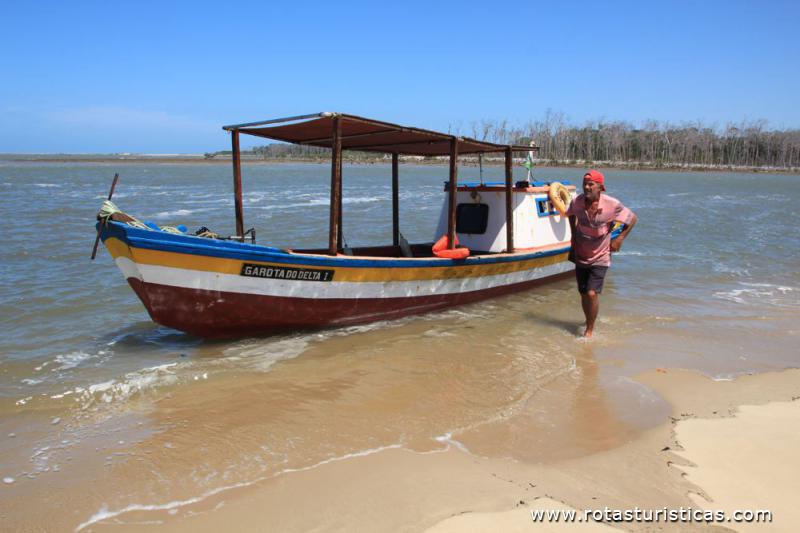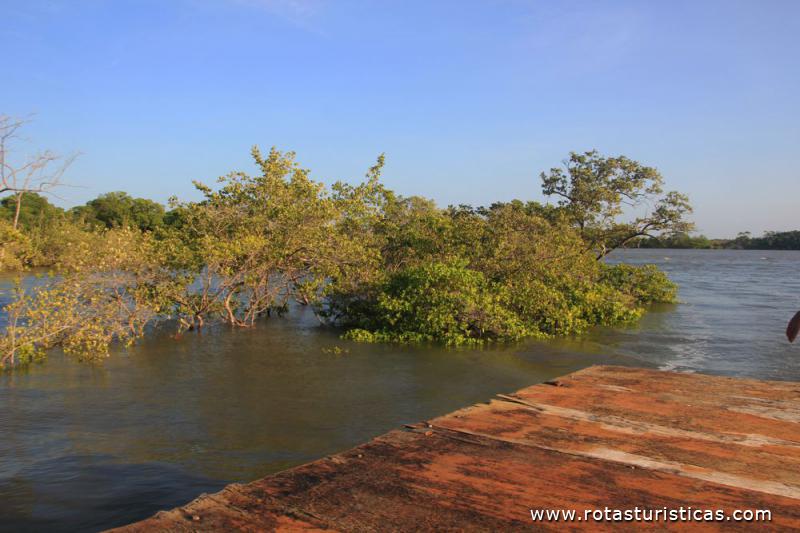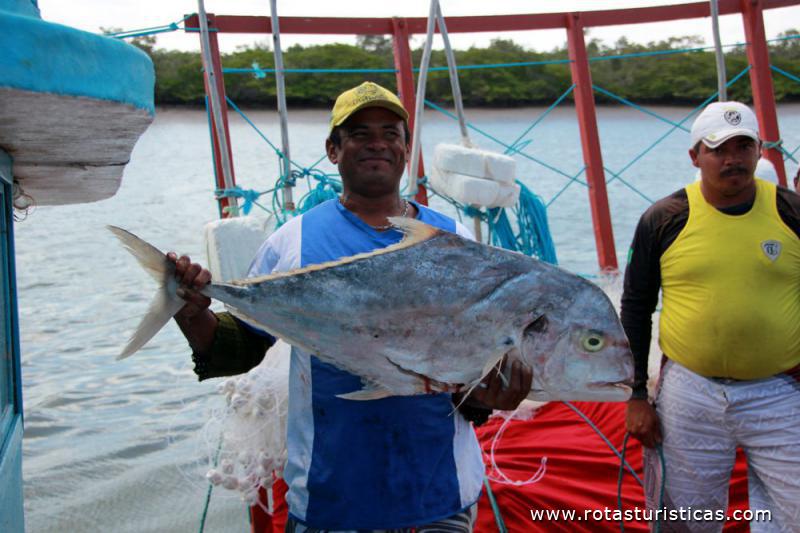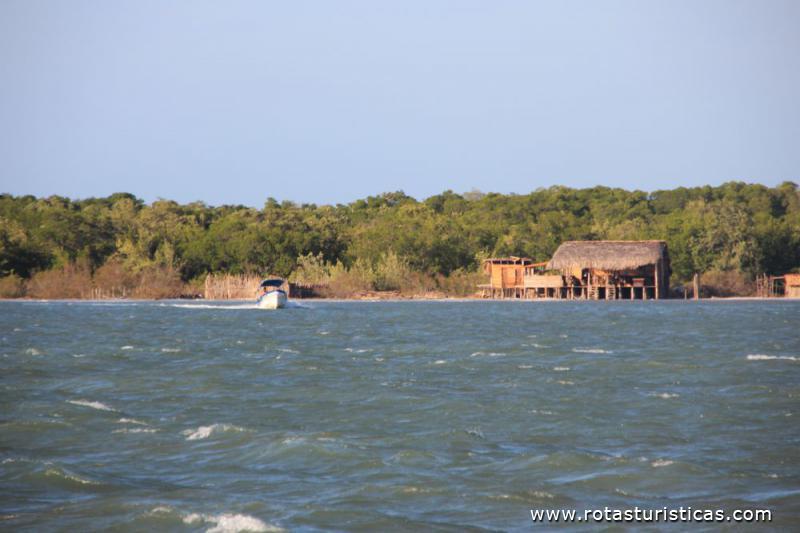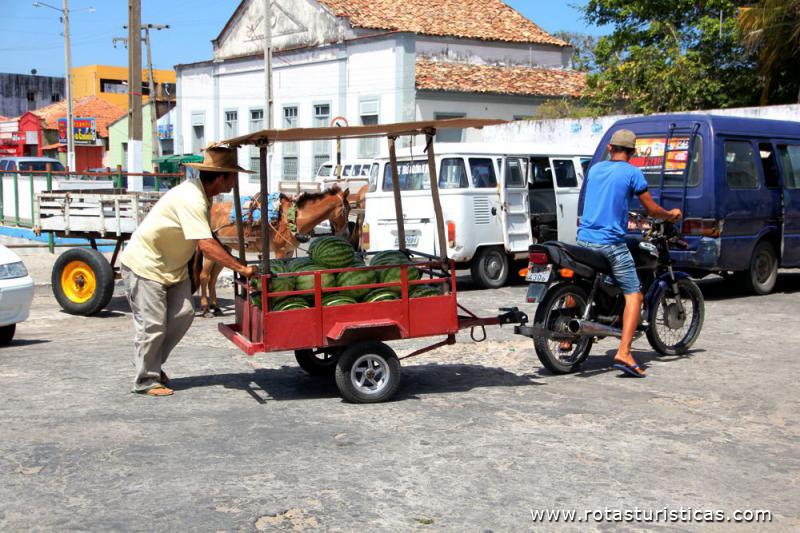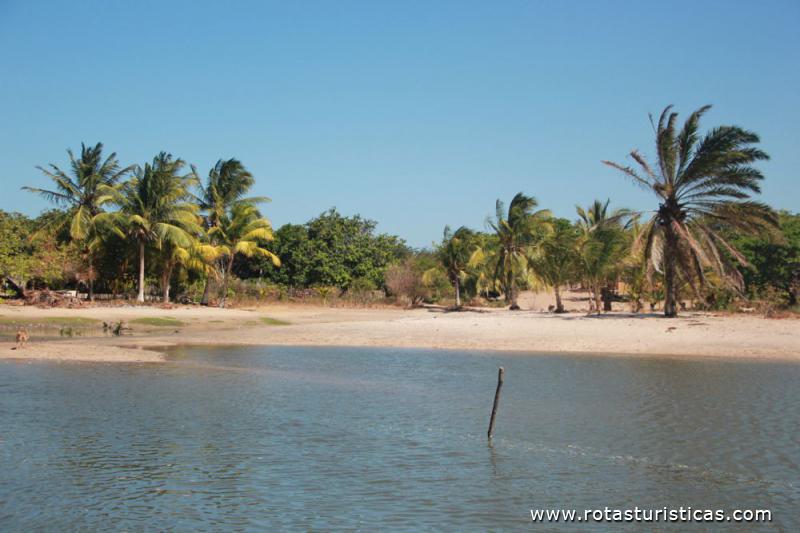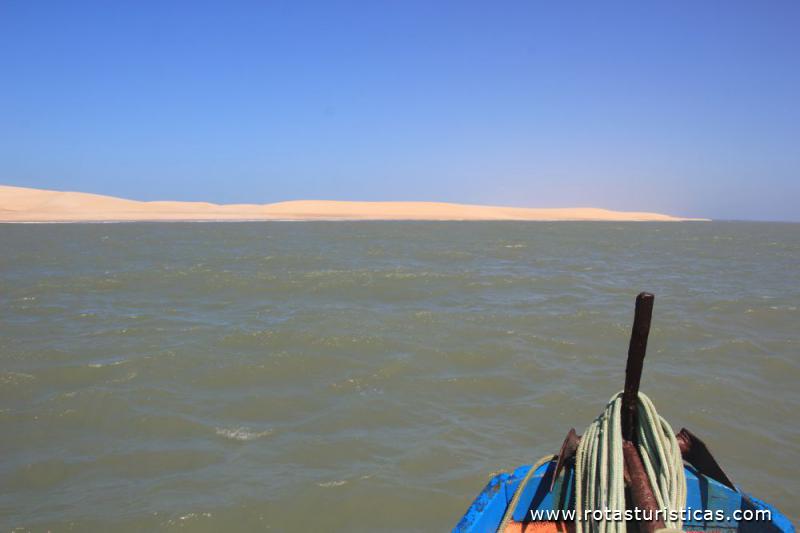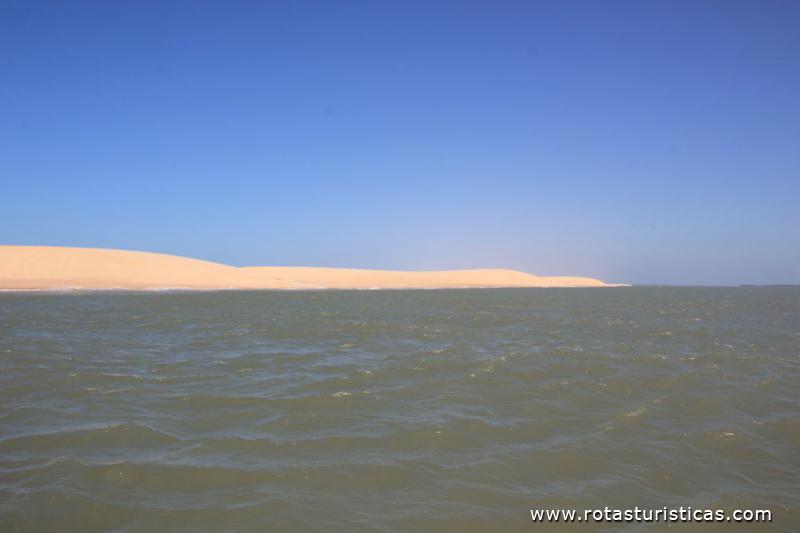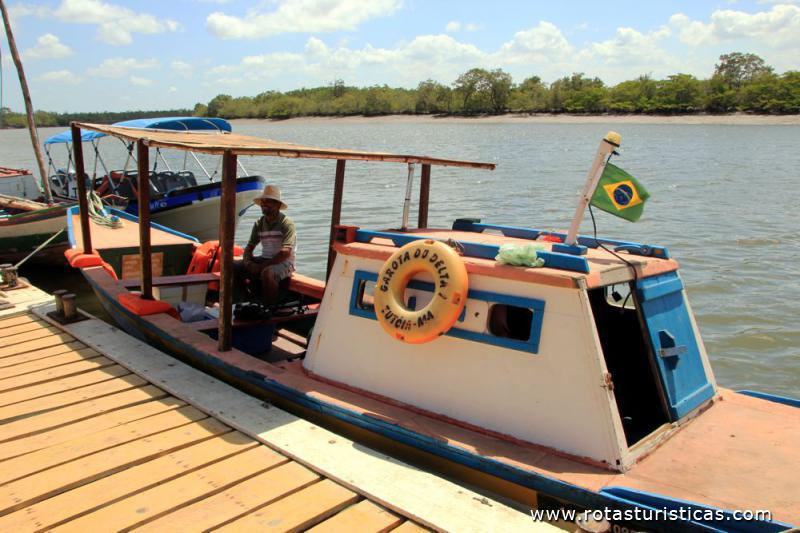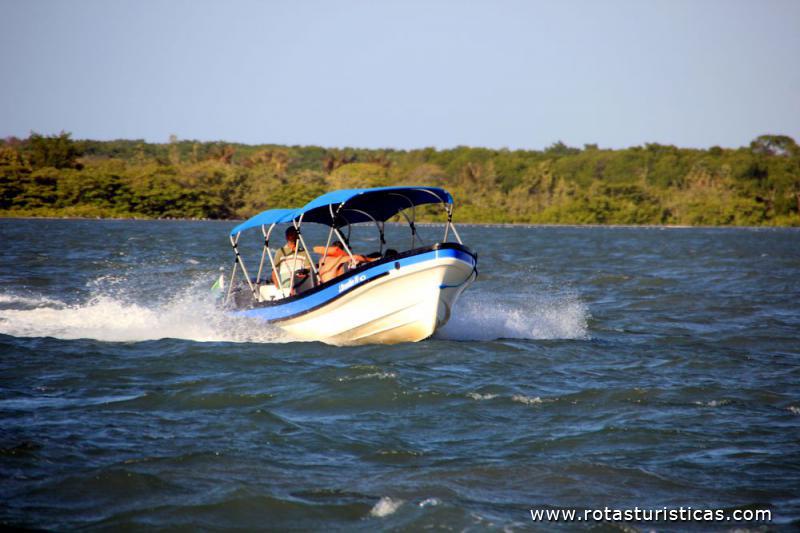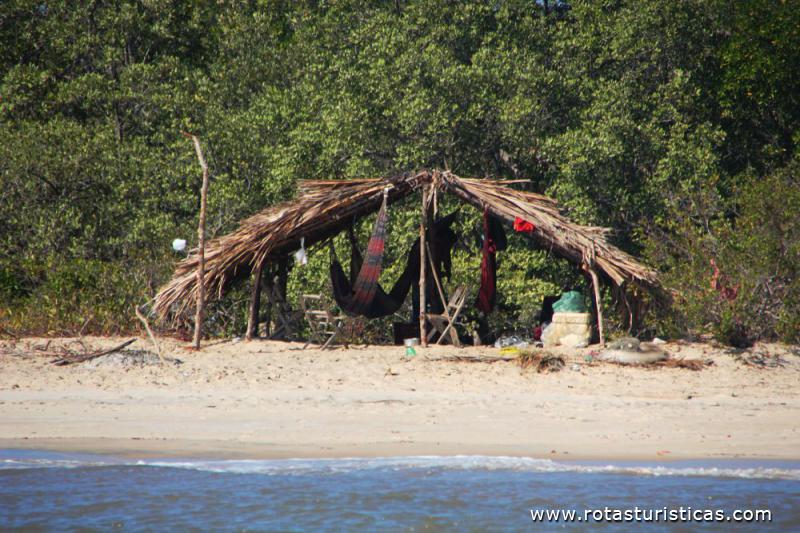Pictures of: Parnaíba River Delta
Location map
Airports
Hotels and other Accommodation
World Nomads
The Travel Insurance with the largest coverage

The Travel Insurance with the largest coverage

Delta do Parnaíba
The Delta of the Parnaíba formed by more than 80 islands and islets, occupies an extension of more than 2,700 square kilometers interspersed by igarapés, constitutes in a rare spectacle of the nature
The gateway to the Parnaíba river delta is by road 20 minutes from the city of Parnaíba or 1 hour from the city of Araioses or 1½ hours from the city of Carnaubeiras (Maranhão).
The Parnaíba River is considered the fourth largest river basin in the country, behind the basins of Amazonas, Paraná and São Francisco. The Delta begins to form when the river descends from the 709 meters of height of the Chapada of Mangabeiras toward the sea. The bifurcated bed of the Parnaíba, forms the arms Igaraçu and Santa Rosa. From there arise dozens of streams and canals that surround islands of various sizes, until they flow into the Atlantic forming five distinct arms known as: Igaraçu, Canarias, Caju, Melancieira and, finally, Tutoia, in the far west. This is what can be considered a happy course of the waters of the river Parnaíba, after traveling 1,485 kilometers from north to south of the state, always on the border with Maranhão.
The Parnaiba Delta is a rare spectacle of nature. Formed by more than 80 islands and islets the only one that empties in the open sea in the Americas) being compared to the rivers Nile, in Africa and Mekong, in Asia.
In addition to dunes, beaches, rivers and streams, the Parnaíba River Delta is formed by extensive mangrove forests.
The vegetation consists of basically three types of mangroves:
Red Mangrove - has a profusion of roots, which have small holes called lenticels where plants breathe;
Mangue Negro - also known as Siriba or Siriúba, grows where the mud is firmer and much less oxygenated, hence the roots grew out in search of air;
White Mangrove - occurs in more sandy terrain, near the mainland.
The mangrove is one of the richest and most vital ecosystems for the environmental balance of the coastal zone, where marine life feeds and reproduces.
Mangroves are considered a kind of "motherhood of the sea". It is in this environment populated by exotic plants and curious animals where shrimp, crabs, clams and many species of birds and fish find abundant food and safe shelter to breed. Mangroves are also very useful for man. It is an important source of food and economic resources. They are used as a source of vegetal extractivism through the use of wood from the species and the extraction of tannin, a substance used in the tanning of hides, skins and in the painting of boats' sails. The explanation for the high productivity of the mangroves is simple: the great amount of organic matter that arrives at the bays and inlets through the outflows of rivers by the tides.
The gateway to the Parnaíba river delta is by road 20 minutes from the city of Parnaíba or 1 hour from the city of Araioses or 1½ hours from the city of Carnaubeiras (Maranhão).
The Parnaíba River is considered the fourth largest river basin in the country, behind the basins of Amazonas, Paraná and São Francisco. The Delta begins to form when the river descends from the 709 meters of height of the Chapada of Mangabeiras toward the sea. The bifurcated bed of the Parnaíba, forms the arms Igaraçu and Santa Rosa. From there arise dozens of streams and canals that surround islands of various sizes, until they flow into the Atlantic forming five distinct arms known as: Igaraçu, Canarias, Caju, Melancieira and, finally, Tutoia, in the far west. This is what can be considered a happy course of the waters of the river Parnaíba, after traveling 1,485 kilometers from north to south of the state, always on the border with Maranhão.
The Parnaiba Delta is a rare spectacle of nature. Formed by more than 80 islands and islets the only one that empties in the open sea in the Americas) being compared to the rivers Nile, in Africa and Mekong, in Asia.
In addition to dunes, beaches, rivers and streams, the Parnaíba River Delta is formed by extensive mangrove forests.
The vegetation consists of basically three types of mangroves:
Red Mangrove - has a profusion of roots, which have small holes called lenticels where plants breathe;
Mangue Negro - also known as Siriba or Siriúba, grows where the mud is firmer and much less oxygenated, hence the roots grew out in search of air;
White Mangrove - occurs in more sandy terrain, near the mainland.
The mangrove is one of the richest and most vital ecosystems for the environmental balance of the coastal zone, where marine life feeds and reproduces.
Mangroves are considered a kind of "motherhood of the sea". It is in this environment populated by exotic plants and curious animals where shrimp, crabs, clams and many species of birds and fish find abundant food and safe shelter to breed. Mangroves are also very useful for man. It is an important source of food and economic resources. They are used as a source of vegetal extractivism through the use of wood from the species and the extraction of tannin, a substance used in the tanning of hides, skins and in the painting of boats' sails. The explanation for the high productivity of the mangroves is simple: the great amount of organic matter that arrives at the bays and inlets through the outflows of rivers by the tides.
Tourism
Water mirrors, mangroves, dunes, ponds, wild animals, rivers and beaches with paradisiacal landscapes. All this with the sun shining bright all year round, this is the scenery that the tourist finds in the Delta of Parnaíba
The Parnaíba Delta is a point of passage on boat and boat trips and, with the current development of tourism in the region, the islands have become a point of lodging and observation of the flora and fauna there.
The green, the clean waters, the aerial roots of the mangroves, the tasting of the crab, the sinuosity of the igarapés and the white dunes of more than 40 meters impress tourists and visitors.
This exuberant beauty that has withstood new pathfinders and is today a symbol of sustained development.
One of the most sought after destinations in the region, the Canary Island, second largest in the Parnaíba Delta after the Big Island, houses a fishing village with more than 2,500 inhabitants. The island is an area of environmental preservation, it is part of the marine reserve of the Delta and its population is distributed in four villages: Canaries, Passarinho, Torto and Caiçara. There are inns and restaurants and is an ideal place for people interested in ecotourism.
The Parnaíba Delta is a point of passage on boat and boat trips and, with the current development of tourism in the region, the islands have become a point of lodging and observation of the flora and fauna there.
The green, the clean waters, the aerial roots of the mangroves, the tasting of the crab, the sinuosity of the igarapés and the white dunes of more than 40 meters impress tourists and visitors.
This exuberant beauty that has withstood new pathfinders and is today a symbol of sustained development.
One of the most sought after destinations in the region, the Canary Island, second largest in the Parnaíba Delta after the Big Island, houses a fishing village with more than 2,500 inhabitants. The island is an area of environmental preservation, it is part of the marine reserve of the Delta and its population is distributed in four villages: Canaries, Passarinho, Torto and Caiçara. There are inns and restaurants and is an ideal place for people interested in ecotourism.
Gastronomy
The cuisine of the Parnaíba Delta region is based on seafood. The crab-uçá is typical of the region. Cooked in water and salt, the crab-uçá can be eaten whole; dismembered with chopsticks, breaded legs and the shell of cooked crab meat.
Weather
The climate of the region is tropical, with temperatures between 18º and 39º C. At night, the thermometers can reach 20ºC. The months of May to August have milder temperatures.
The period from April to July is the ideal time for the observation of animals.
The period from April to July is the ideal time for the observation of animals.
Tips
Wear light clothing, hat, repellent, sunscreen and sunglasses.
Drink lots of liquid and light food: juices and fruits.
It is recommended to people who may feel nauseous, to take any medication prescribed by their doctor.
Drink lots of liquid and light food: juices and fruits.
It is recommended to people who may feel nauseous, to take any medication prescribed by their doctor.
Other tourist destinations in:
Brazil
Brazil
Other world tourist destinations
Why to book with TOURISTIC ROUTES
The best prices
Our partnerships with the world´s largest operators offer research on the best market prices.
More options
At Rotas Turisticos you can book the hotel, buy the air ticket, book the transfer from the airport to the hotel and vice versa, book the local excursions, rent the car, take travel insurance and consult the places to visit and where to go.
Holiday Tips & Destinations
Hundreds of holiday destinations with all the options that allow you to easily choose the destination that best suits your dream vacation.
TOURISTIC ROUTES
Links

